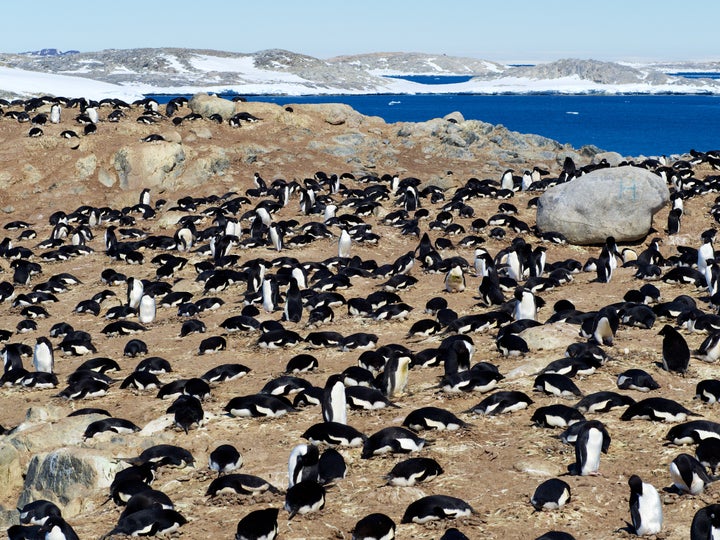Video by Tom Compagnoni
Hey, we all make mistakes. The key is how you recover from them.
Antarctic scientists wildly underestimated the number of Adélie penguins in just one part of Antarctica by, oh, a paltry 3.6 million or so. But the good news is they're back on track now, and are well on the way to a better understanding of the birds.
Adélies were named after the wife of an 1840s French explorer. Unlike most other penguin species, they live only on the frozen continent and nearby small islands. But how many of them are there?

Well, scientists now believe there are 5.9 million penguins on a 5,000 km stretch of coastline in east Antarctica alone. Extrapolating from that, their best guess is 14 to 16 million birds in the whole of Antarctica.
Previous estimates had the east Antarctic population at closer to 2.3 million. So how did a team of French, Japanese and Australian scientists suddenly find an extra 3.6 million flipper flappers?
Australian Antarctic Division seabird ecologist Dr Louise Emmerson had the answer to that on Wednesday.
"The reason it's higher is we have incorporated the non-breeding component of the population," she said.
"The non-breeders are essentially an invisible component of the population. The breeders are very well behaved. They come to the islands and sit around on eggs and we can count them easily. But these non-breeders are foraging out in the water where we can't see them. They may visit from time to time but they are essentially invisible to us."

Using a pretty nifty combination of aerial surveillance and a range of land-based counting methods, scientists were at last able to compile a comprehensive survey of these avian tiny tuxedoes. You might say that where these Adélies are concerned, at long last the scientists could have had it all.
The research also estimated the amount of food needed to support the Adélie penguin population. Adélies eat small fish, jellyfish and krill -- the tiny crustaceans which are a key element of the Antarctic food chain.

"An estimated 193,500 tonnes of krill and 18,800 tonnes of fish are eaten during the breeding season by Adélie penguins breeding in East Antarctica," Dr Emmerson said.
The dietary information will be used by the Commission for the Conservation of Antarctic Marine Living Resources to set sustainable krill fishery catch limits.
But how did scientists survey what the penguins eat?
Ah, well a key element of collecting the data was examining penguin poo. So next time you think you're having a bad afternoon, remember that you could be standing around in minus 10 closely examining penguin faeces.
ALSO ON HUFFPOST AUSTRALIA